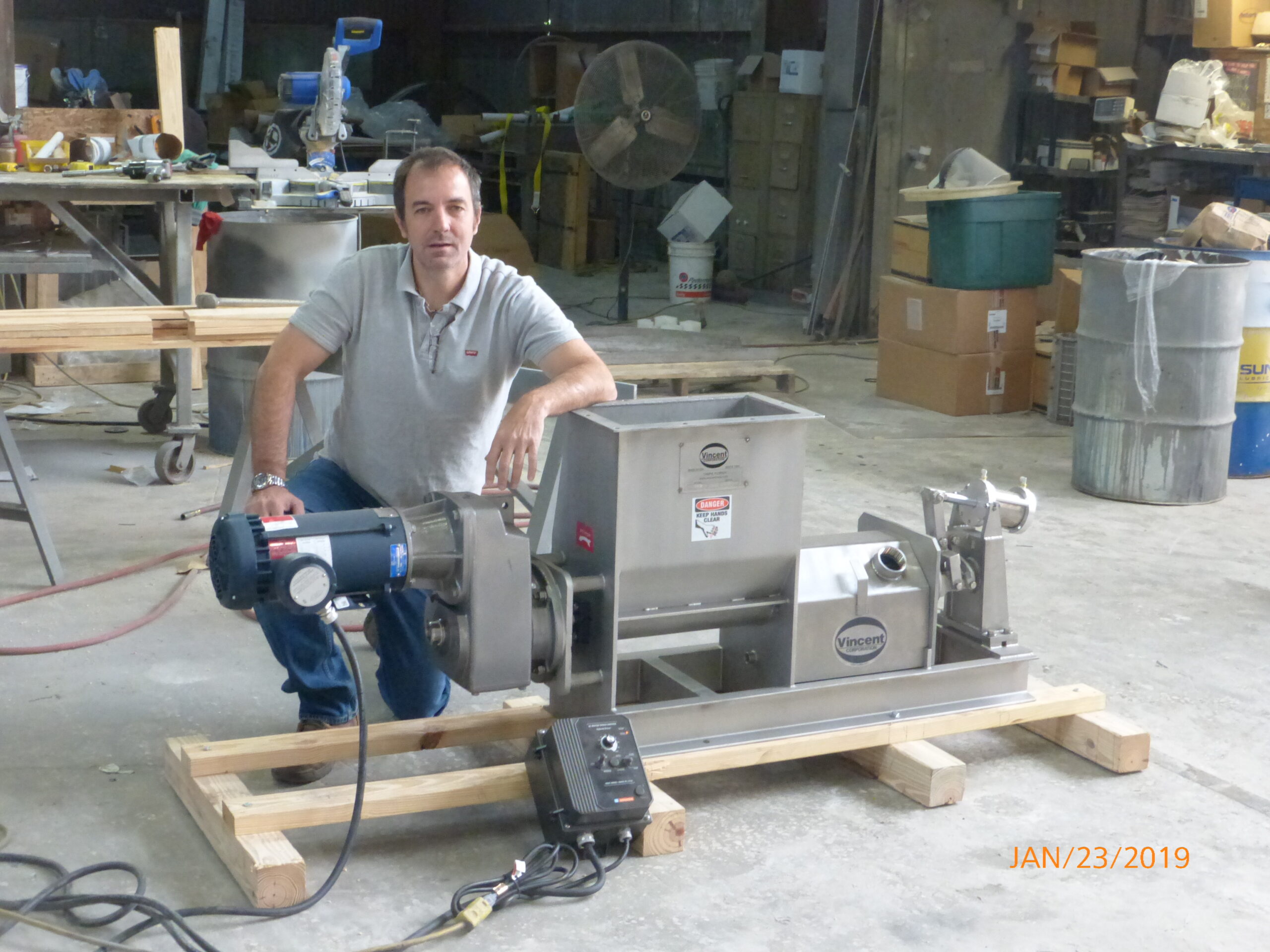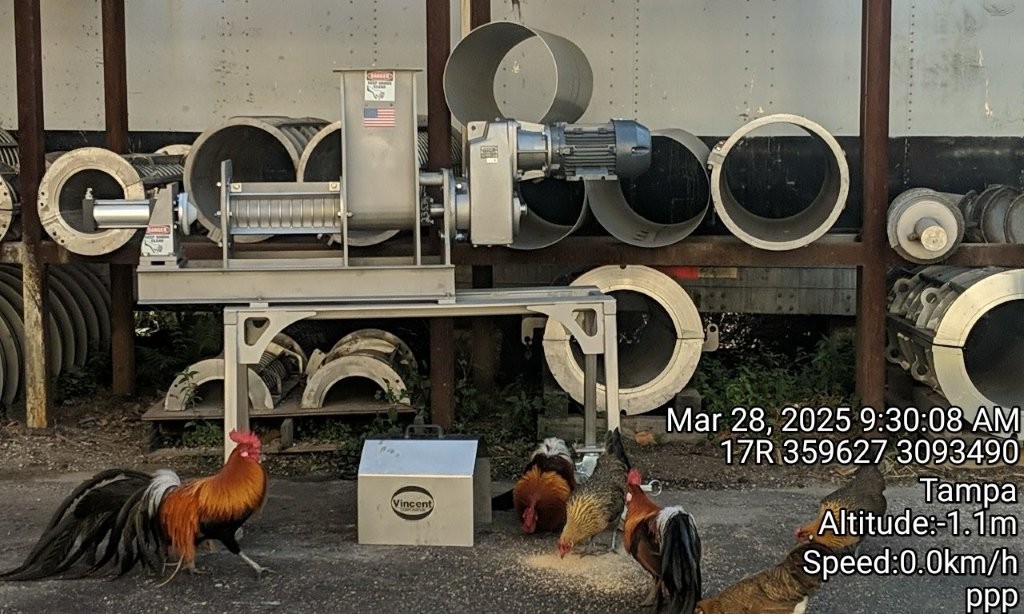March 31, 2025
In May of 1994 we saw a lot of activity with the then-new Vincent CP-4 press. This is a bench top model intended for small commercial operations, pilot plants, or laboratory work.
It is suitable for a wide range of applications: The first two units were sold in California, going into (a) a laboratory for a food processors association and (b) sludge dewatering in a plastic recycling plant. In Texas two units had been rented: one for dewatering spent coffee grounds and one for dewatering a stream of sawdust and water. Successful testing has been completed on shredded coconut and pulp rejects at a paper recycling plant. Furthermore, units were committed for testing on biogas digester effluent in New York and waste from an In-Sink-Erator at a Bronx nursing home.
The tiny press is of all-stainless steel construction and easily disassembled for clean up. It is a self-contained unit, complete with motor and gear reducer, and the motor plugs into any convenient wall outlet.
The CP-4 comes with a wedgewire screen as a standard feature. Like its bigger brothers, it is a screw press in which a screw with progressively reducing pitch rotates inside a cylindrical screen. Material entering the hopper is subjected to gradually increasing pressure as it moves toward the exit end of the press, forcing the liquid phase to extrude through the slots of the screen. A cone at the exit end of the press applies an additional back pressure, which is adjustable. The flights of the screw are interrupted at regular intervals, with resistor teeth protruding into the material. These further enhance the pressing action and also prevent co-rotation of the material being processed.
Today, thirty years later, the press is going strong, with over 350 having been sold. Many options are available. The principal option is the CP-4L. The inlet hopper of this press is 16” long, compared to 8” in the traditional model.
Another option is a RUNI stand, with casters and splayed legs (for stability).
The presses come with a Genesis variable frequency drive, for variable speed operation. It comes with a reversing option.
Also, the traditional CP-4 model now positions the air cylinder, which actuates the discharge cone, in line with the screw.
Photos of these two versions of the CP-4 are seen below.


ISSUE #359
